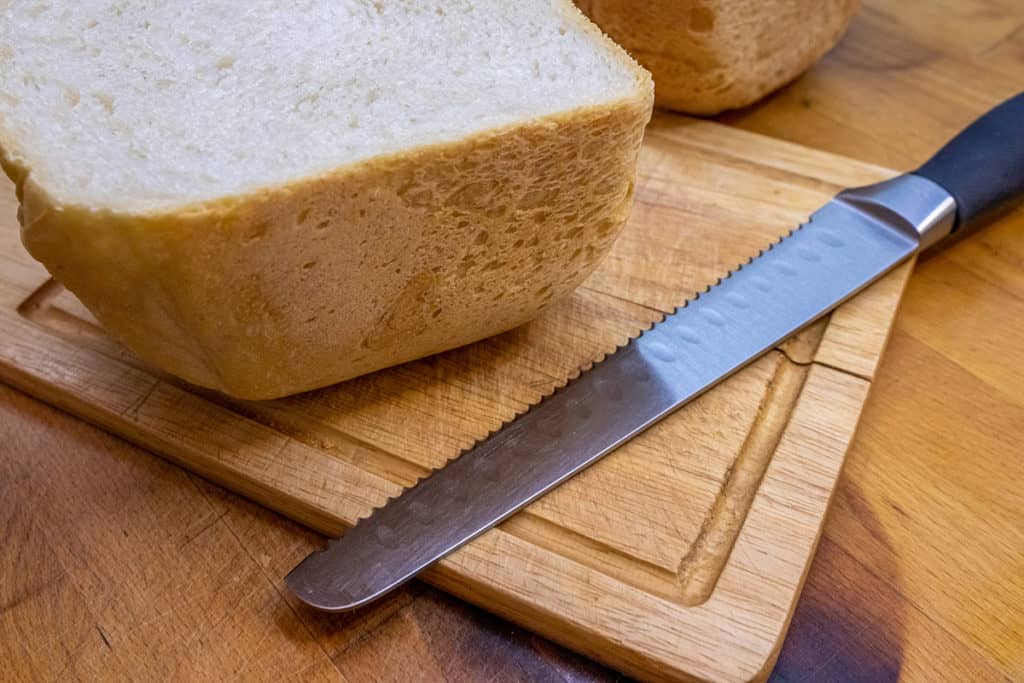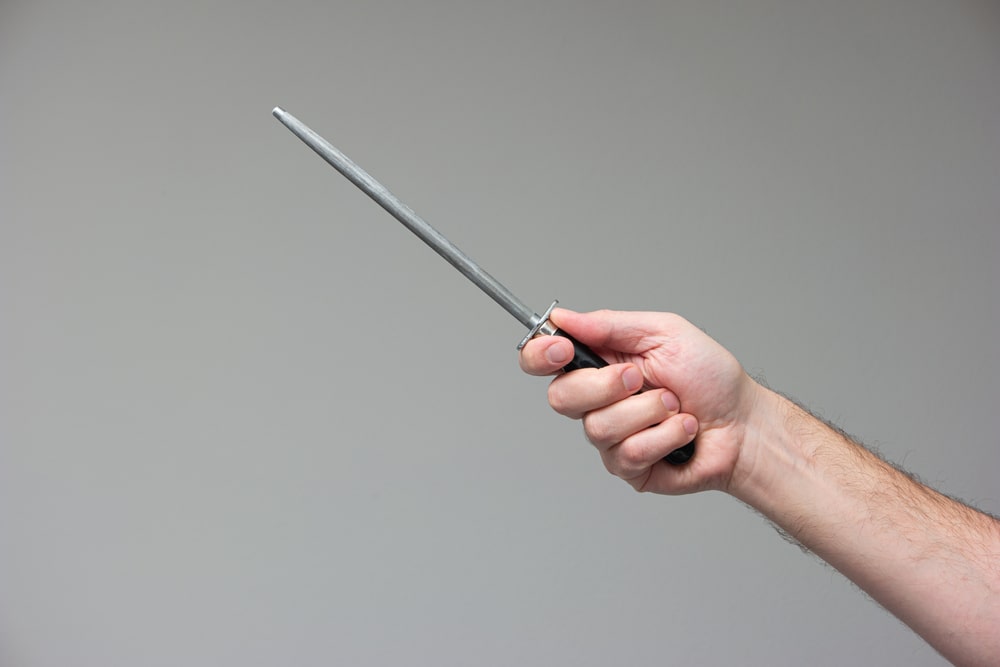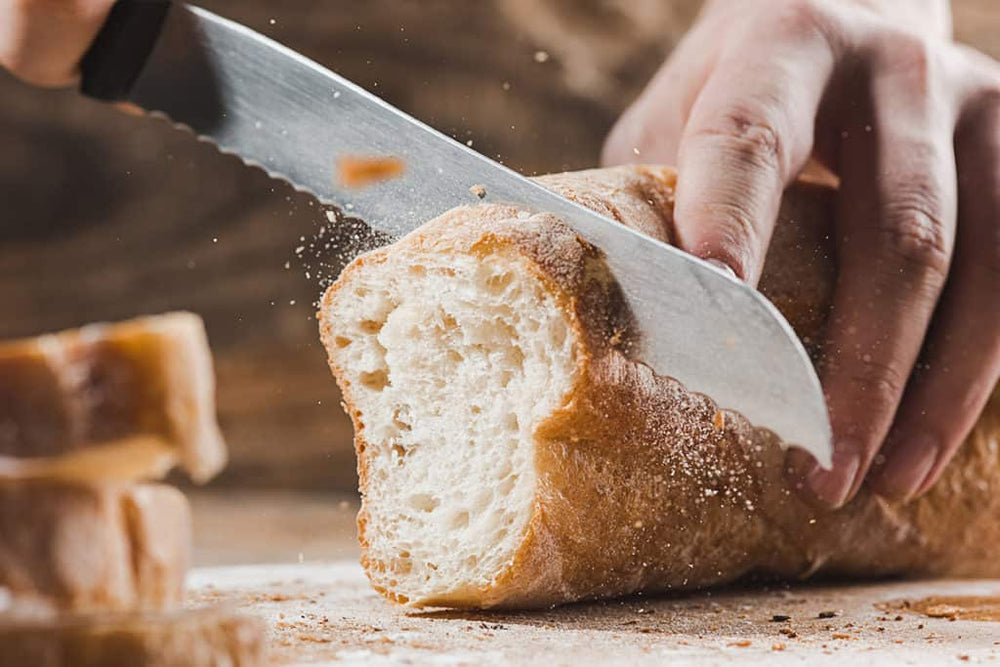Your Cart is Empty
Free US Shipping
Free US Shipping
A good cook is partly an artist and partly a craftsman, and every craftsman needs the right tools for the job. One of the most essential tools for a cook is a knife, and a must-have for a good cook is a serrated knife. Sometimes, a novice in the kitchen may wonder if this kind of knife can be sharpened and how that might be done.
A serrated knife can be sharpened, just as any other kind of knife can be sharpened. The sharpening process, however, is slightly different. It can best be done by using a ceramic sharpening rod, but you can also use an electric sharpener or even a coffee mug to sharpen your serrated knife.
In this article, I’ll give you a detailed explanation of the techniques for sharpening your serrated bread knife. This will help you maintain the sharpness and usability of your weapon of choice. Furthermore, you’ll be able to get more use from your serrated knife and thus create more delicious meals!
A serrated knife is like a tiny saw and works in much the same way. Instead of a straight edge, its edge is covered with so-called teeth, which are pointy and very sharp. The spaces between the teeth are very sharp as well.
The teeth do a great job breaking a hard bread crust, while the spaces between them follow through and slice the bread. This gives you a nice, well-shaped slice of bread that’s great for sandwiches and doesn’t make a mess with a bunch of crumbs.

If you start noticing that your knife is not performing as well as it should - if it damages your bread (or vegetables) or if it makes a mess, for example - you know it’s time to sharpen it.
You may have the misconception, as so many others do, that a serrated knife can’t be sharpened. Its odd shape could make you think that nothing can be done to sharpen it. After all, the usual sharpening techniques, like using a stone, don’t work in this case.
Moreover, there’s a strange idea among many cooks that sharpening serrated knives isn’t worth it. These people believe if your knife is past its peak performance, you should just discard it and get another one. Not only does this become more expensive than buying a good knife after some time, but it’s also tremendously wasteful and completely environmentally unfriendly.
A serrated knife can most definitely be sharpened, and all it takes to do so is a little bit of time and effort. Furthermore, sharpening your knife instead of discarding it is definitely worth it as it will save you lots of money in the long run.
It’s true that sharpening a serrated bread knife can be more work than sharpening a simple straight-edged knife. Still, since you have to do it less often and doing so is going to help you preserve it, I’d say it’s definitely worth the effort.
In the following sections, I’ll give you some details on the most common techniques for sharpening a serrated knife, ranked from best to worst.
This is the most straightforward option, even though it consumes a bit of time and effort.

You can choose between steel rods, ceramic rods, and even diamond rods. A ceramic rod might be preferable in this case because it’s easy on the knife. However, you can choose any of these options and get decent results.
Keep in mind that each serration needs to be sharpened individually. This is why it might take up some of your time.
You simply need to insert the rod into a serration and slide it away from you, gently, until the width of the rod matches the width of the serration. Don’t push too far, or else you’ll damage the knife. Do this a few times for each serration, and you’ll be ready to go.
After this, you should inspect your knife to see if there are any burrs, small pieces of metal that stick to it. You can run your rod up and down the knife to remove them, or you can use a stone for that. And there you have it, your serrated knife will be sharp and ready to go!
People sometimes wonder if it’s possible to use an electric sharpener on their serrated knives. Technically, it is, but it’s far from the best option. Using an electric sharpener means that you’ll have less control.
This is a significant disadvantage when it comes to serrated knives as they demand more precision than straight-edged knives. Remember: Each serration needs to be sharpened separately!
I wouldn’t recommend doing this unless you were really in a hurry and needed to sharpen your knife as soon as possible. Stick to a rod whenever possible.
Let’s say that you have no access to any sharpening tools, but you really need to sharpen your knife. One trick that’s present on the Internet is using a coffee mug.

You need a thick mug, not a cup, preferably an old one. Place it upside-down on a stable surface and fit its edges between the serrations, moving it up and down like a sharpening rod. Be careful not to cut yourself!
Granted, this is by far the worst option as it can be detrimental to both the mug and the knife. Use it only if really necessary!
Despite some common misconceptions, a serrated bread knife can be sharpened, which is a great way to add to its durability and the length of its use. Sharpening your serrated knife regularly and taking good care of it will mean it stays in good shape and serves you well for many years.
Furthermore, this is definitely a better option than opting for cheap knives and discarding them once they’re dull. It will save you money eventually, and it is far less wasteful and better for the environment.
